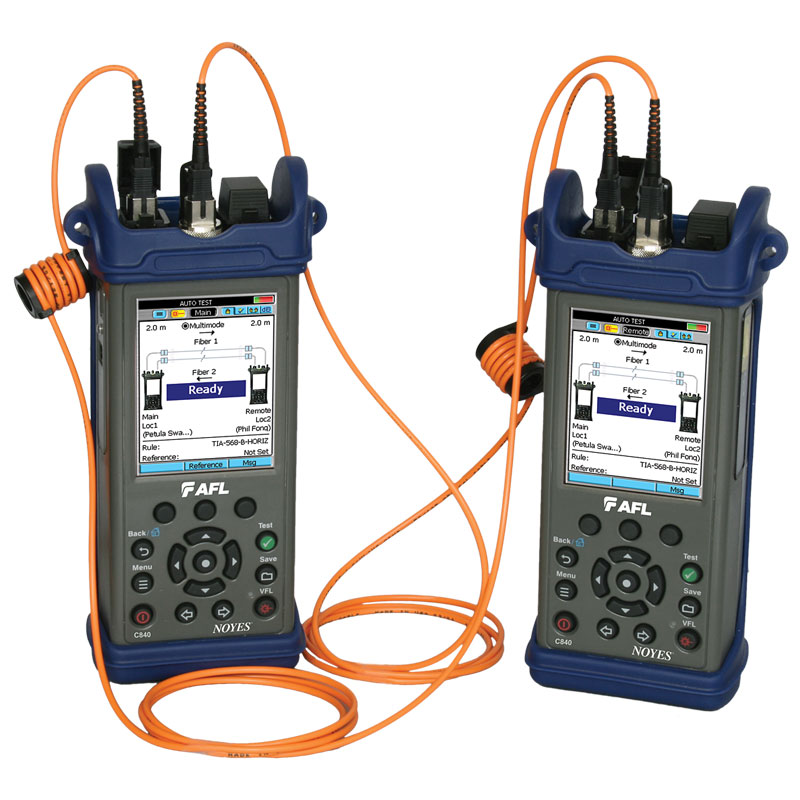Exploring the Benefits of Optical Fibre Evaluating for Boosted Interaction Systems
The significance of optical fiber screening in contemporary communication systems can not be overstated, as it serves as a structure for ensuring network dependability and performance. This aggressive screening approach has extensive implications for signal top quality and functional efficiency, increasing the question of just how these methods add to long-lasting sustainability in an ever-evolving technological landscape.
Value of Optical Fibre Testing
The importance of optical fibre screening can not be overstated in today's data-driven setting. As companies increasingly depend on high-speed information transmission for everyday procedures, the integrity and efficiency of optical fiber networks are critical. Checking makes certain that these networks can sustain the substantial quantities of information generated and sent perfectly, fostering effective communication and connection.
Optical fiber testing offers several critical functions, consisting of verifying installment quality, recognizing potential faults, and establishing total system performance. Regular testing can avoid expensive downtimes and solution interruptions, enabling companies to preserve operational continuity. It assists in compliance with industry requirements and policies, guaranteeing that fiber optic setups fulfill required specs for security and dependability.
Furthermore, screening can improve the longevity of fibre optic systems. By proactively recognizing concerns such as signal loss, depletion, or connector failures, companies can address problems prior to they rise, hence expanding the life of their framework. In recap, optical fiber testing is not merely a technological requirement however a strategic financial investment that improves network dependability, maximizes performance, and ultimately supports the growth and efficiency of modern-day communication systems.
Trick Checking Techniques

OTDR is a crucial method used to recognize faults, procedure splice losses, and analyze the general honesty of a fibre optic web link. By sending a pulse of light down the fiber and evaluating the reflected light, specialists can identify locations of mistakes and examine the network's efficiency over fars away.
Insertion loss testing measures the quantity of signal loss that occurs when light go through a link or splice. This technique is critical for confirming that links satisfy specific loss limits, which is essential for preserving optimum performance in communication systems.
Optical return loss screening measures the amount of light reflected back in the direction of the resource as a result of blemishes in the fiber or connections. High return loss values indicate much better performance and reduced signal degradation.
With each other, these screening techniques give a thorough analysis of fiber optic networks, ensuring their reliability and performance in varied interaction applications.
Influence On System Performance
Reliable optical fiber testing directly affects the overall performance of communication systems. By making certain the stability of fiber optic cords, screening determines possible faults such as depletion, splice loss, and adapter imbalance. These concerns can dramatically degrade signal quality, bring about disruptions and lowered information transmission rates.

Furthermore, regular optical fibre screening adds to long-term system sustainability. It allows early discovery of deterioration, enabling timely upkeep and upgrades before significant failings take place. This not only lengthens the life expectancy of the infrastructure but also makes certain that communication systems continue to be affordable in regards to efficiency.
Cost-Effectiveness and Efficiency
Cost-effectiveness is a critical factor to consider in the release and upkeep of optical fibre networks. Implementing robust optical fibre screening procedures can significantly lower operational costs by recognizing issues prior to they escalate right into major troubles. ofda. By detecting faults, attenuation, and various other performance barriers early, companies can stay clear of expensive repairs and downtime, which can interrupt services and bring about income loss
Furthermore, effective testing methodologies improve the installment procedure, enabling professionals to work better. This translates to reduce labour expenses and faster job completion times. Advanced screening devices, such as Optical Time Domain Name Reflectometers (OTDRs), get redirected here enables an exact evaluation of fibre high quality, making sure that only optimum products are made use of, therefore lessening waste.
Routine testing also adds to far better source allotment. By understanding the network's efficiency, organizations can make educated choices concerning upgrades and developments, making certain that investments are made where they are most required. In summary, optical fibre testing improves cost-effectiveness and effectiveness, supporting the long-term sustainability and competition of interaction systems in a progressively demanding market.
Making Sure Long-Term Integrity
Carrying out extensive optical fibre screening not just boosts cost financial savings and functional efficiency but likewise plays a critical duty in ensuring the lasting reliability of interaction networks. Constant screening methods, including depletion and data transfer evaluations, help determine potential deterioration in fiber efficiency prior to it results in service disturbances.
By utilizing advanced testing methodologies, network operators can determine faults or weak points in the fiber infrastructure, enabling timely remediation. This positive technique decreases downtime, guaranteeing that communication systems stay functional and efficient. Routine testing adds to the advancement of a more resilient network, as drivers can adjust and maximize their facilities based on real-time information understandings.
Additionally, guaranteeing conformity with market requirements with optical fiber screening enhances the top quality and stability of the whole interaction system. This adherence not just strengthens confidence amongst stakeholders yet additionally lines up with regulative demands, which are progressively rigid.
Final Thought
In conclusion, optical fiber screening serves as a fundamental component in enhancing communication systems. By utilizing different testing approaches, such sites as OTDR and insertion loss assessments, networks can achieve optimal performance and reliability.
Comments on “The latest optical fibre testing equipment improves troubleshooting and diagnostics in telecommunications.”